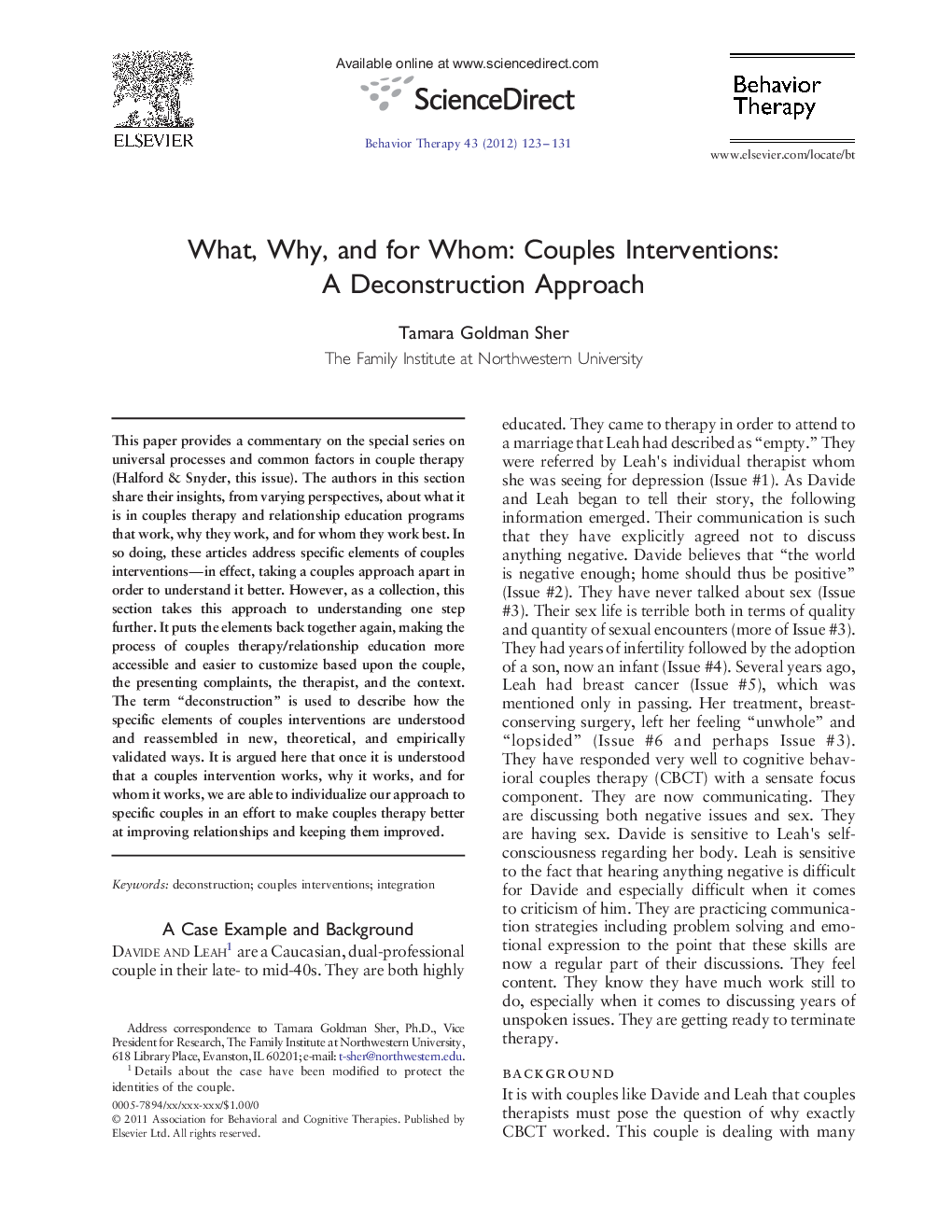| Article ID | Journal | Published Year | Pages | File Type |
|---|---|---|---|---|
| 901497 | Behavior Therapy | 2012 | 9 Pages |
This paper provides a commentary on the special series on universal processes and common factors in couple therapy (Halford & Snyder, this issue). The authors in this section share their insights, from varying perspectives, about what it is in couples therapy and relationship education programs that work, why they work, and for whom they work best. In so doing, these articles address specific elements of couples interventions—in effect, taking a couples approach apart in order to understand it better. However, as a collection, this section takes this approach to understanding one step further. It puts the elements back together again, making the process of couples therapy/relationship education more accessible and easier to customize based upon the couple, the presenting complaints, the therapist, and the context. The term “deconstruction” is used to describe how the specific elements of couples interventions are understood and reassembled in new, theoretical, and empirically validated ways. It is argued here that once it is understood that a couples intervention works, why it works, and for whom it works, we are able to individualize our approach to specific couples in an effort to make couples therapy better at improving relationships and keeping them improved.
► Commentary for Special Section. ► Review of how articles address what works, why and for whom in terms of couples therapy and relationship education. ► Use of “deconstruction” to describe how elements of couples interventions can be understood and reassembled. ► Future should look to even smaller but still meaningful components for couples interventions.
